Our credo is to provide complex care. Our main goal is dental treatment without the need for continual repairs ensuring long term health and stability. All our treatment is provided in one location using only the most modern technology.
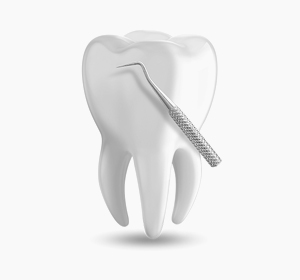
Prevention
In order to keep your teeth healthy and beautiful, we pay close attention to regular preventive care. This reveals any future problems in time. Solving a problem in time is easier and quicker. It is very important, as a regular part of preventive care, to visit a dental hygiene clinic. A dental hygienist will remove tooth stone build-up and pigments. You will also be instructed on proper techniques of dental hygiene.
The main task of preventive inspection is a complex check of your oral cavity. We will examine and judge the state of the smooth mucous membrane and salivary glands, surface of the tongue, near lymph nodes and jaw joints. Another important part of preventive examination is periodontological examination of gums, their hemophilia and potential retreat of the bone. And finally we check the teeth. Your doctor views and evaluates pigment and tooth stone build-up, which he either immediately removes or recommends to visit to a dental hygienist. Next, he checks for the existence of problems, sensitive necks, status of older fillings and prosthetic works, and possible implants.
At regular intervals we take detailed X-ray snapshots, so-called „bit-wing“, once a year, and digital panoramatic snapshots once per 2 years.
Dental hygiene
The word “prevention“ is often mentioned in dentistry, mainly dental hygiene, which is an essential part of dental care. Most problems affecting teeth and surrounding tissue are a consequence of tooth coating, which clings to teeth. Regular dental hygiene can prevent most problems. Later treatment is significantly more complicated and expensive. Clean teeth do not decay and such prevention is well worth it.
Dental hygiene covers all methods and forms of care in the oral cavity. We, at HydePark Dent, pay close attention to individual hygiene regime, which covers selection of tools for dental hygiene, training in their use and professional cleaning of teeth (removal of tooth stone build-up, plaque and pigments). Part of your dental hygiene is also evaluation of your gums and any other factors which may affect hygiene of the oral cavity. Typical frequency for your dental hygiene treatment is twice per year when you also attend your regular preventive examination with your dentist. If needed, the interval can be shorter (3-4 times per year).
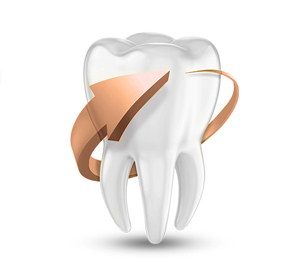
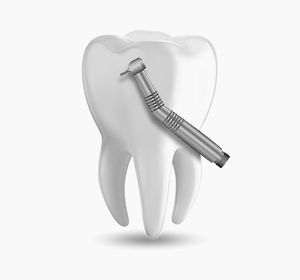
Preservation dentistry
Conservation treatment or preservation dentistry has one goal – to help you keep your own teeth for as long as possible. It consists mainly of treatment of tooth problems, diseases of tooth pulp (endodontics) and mechanical damage caused, for example, by an injury. We have known for many years what causes dental problems, inflammation of gums and periodontitis. Even though preventive measures are known (careful dental hygiene, regular examinations), these are still among the most frequent chronic diseases in our country. The problems are very often discovered too late, since the patient does not feel any discomfort. Late treatment is financially and time demanding and prognosis is always worse than in case of healthy teeth.
The main task of preventive inspection is a complex check-up of your oral cavity status. We will examine and evaluate the status of the smooth mucous membrane and salivary glands, surface of the tongue, near lymph nodes and jaw joints. Another important part of preventive examination is also periodontological examination of gums, their hemophilia and potential retreat of the bone and finally the teeth themselves. A doctor evaluates the pigment and tooth stone build-up by sight, which is either immediately removed or a visit to dental hygienist may be recommended. Next, your doctor checks for existence of any problems, sensitive necks, status of older fillings and prosthetic works, and possible implants.
What is tooth decay? Tooth decay is the most frequent infectious disease. It is caused by bacteria and microorganisms in the oral cavity. Bacteria is mainly on the tooth coating, and its amount is increased when oral hygiene isn’t sufficient. Bacteria releases toxic matter. Among the most important are acids, which are produced during metabolism of sugars. These acids then damage tooth’s surface and allow bacteria to penetrate deeper into the structure where more decay and damage is caused.
If this decay (bacteria) penetrate into the pulp cavity of the tooth (nerve) an infection occurs and treatment is necessary (endodontics). Endodontics treatment is most common when complications occur. It can also treat death of tooth pulp as a consequence of injury. In both these cases it is necessary to remove the damaged nerve, clean all spaces in the tooth and then fill and seal everything hermetically. A prerequisite of successful treatment is thorough mechanical cleaning and disinfection of all the channels. An infectious environment in the tooth can be exhibited by pain and the creation of a bearing of infection in the bone (vesicle). After filling the root system, it is vital to perform consecutive treatment of the crown part of the tooth (filling, crown), which ensures long term stability of the treatment.
Endodontics
If tooth decay (bacteria) penetrates into the pulp cavity of the tooth (nerve), an infection occurs. This needs to be treated by endodontics. Endodontics treatment is the most common consequence of complications of tooth decay. It can also treat death of tooth pulp as a consequence of injury. In both these cases it is necessary to remove the damaged nerve, clean all spaces in the tooth and then fill and seal everything hermetically.
A prerequisite of successful treatment is thorough mechanical cleaning and disinfection of all the channels. An infectious environment in the tooth can be exhibited by pain and the creation of a bearing of infection in the bone (vesicle). After filling the root system, it is vital to perform consecutive treatment of the crown part of the tooth (filling, crown), which ensures long term stability of the treatment.
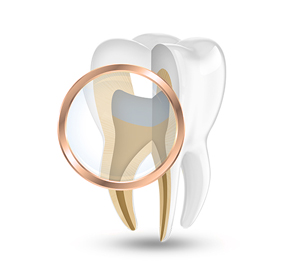

Periodontics
Periodontitis (Parodontitida) is an infectious inflammatory illness of the hanging apparatus of the tooth (periodontal). The periodontal consists of the gums, alveolar bone, root cement and connective threads, which anchor the tooth into the bone. A problem with the periodontal and its lack of treatment steadily leads to receding gums, loss of bone, reveal of dental neck, and release of teeth and eventually their loss.
The cause of this illness is typically excessive bacteria coating (plaque), which after some time causes local inflammation. The illness starts with inflammation of gums, which is displayed by bleeding when brushing teeth. Other symptoms could include increased sensitivity to touch, visible edema and change of colour. If treated in time, this phase of the disease leaves no permanent damage and is completely reversible. When untreated, the inflammation affects other parts of the hanging apparatus of the tooth – alveolar bone, cement and threads which anchor tooth into the bone - and its destruction. This loss is permanent and has both aesthetic and mainly functional negative consequences.
Symptoms of advanced disease are highly visible, among them are strongly bleeding gums, wobbling of teeth, bad breath, sensitive and painful teeth and their movement (teeth change their position and spaces are created between them).
In order to ensure that the treatment is efficient, it has to be careful and complex. Full cooperation of the client as well as perfect dental hygiene are of extreme importance. Treatment of early stages of periodontics are always easier then solving developed complicated stages. It is then necessary to determine exact diagnosis and, according to it, set up corresponding treatment. The goal is to prevent tissue from becoming inflamed and to recover the hanging apparatus of the tooth as well as possible.
Dental surgery
The most frequent treatment in dental surgery that our clinic offers is extraction of a tooth/teeth. Our main priority is painlessness and maximum comfort during all treatments provided.
Extraction of the tooth means its removal from the tooth socket (simply said, capture of the tooth).
We chose to do this when the tooth is extensively damaged by decay (reconstruction is not possible), in late phases of periodontics or for orthodontic reasons. The next most-frequent case is extraction of the third molars (wisdom teeth or eights). These teeth very often cannot grow into their rightful position. Their mucosal cover does not allow proper cleaning, plaque can build up and lead to decay or possibly even gum inflammation.
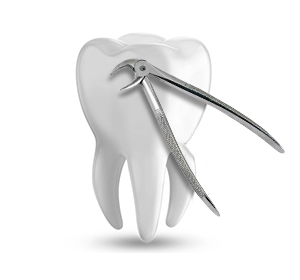

RTG 3D CT
Our clinic has the most modern CB CT device. This allows us to obtain a 3D RTG view anytime. The advantage of the device is small amounts of radiation and high quality of snapshots.
Why CT snapshots? Computer thomography allows the doctor to obtain a complex 3D overview of both jaws of the patient and associated tissue. There, displayed in detail, are the bones of jaws, teeth (including retained), leads of nerves, vessels and everything important connected with each structure.
The graphics program allows very precise measure of any distance, and various views and cuts of tissue can be obtained.
We use this particularly for surgery treatments, mainly implants, when classic X-ray snapshots are not sufficient. It is possible to insert and plan an implant directly into the snapshot.
Implantology
A missing tooth or teeth disrupt the integrity of your set and bring both aesthetic and mainly functional and health problems. A missing tooth causes anatomical changes in the jaw and teeth shifts in their arch (bowing down into the spaces, alight of opposite tooth).
Tooth loss needs to be solved by suitable substitute which returns functionality and a healthy look to the set. Teeth implants are titanium screws, which are painlessly implemented directly to the jaw bone. Titanium is well-accepted by the human organism and after a short time of a few weeks the bone will be firmly connected with the implant, so-called osteointegration. The implant completely replaces the lost tooth’s root. Afterwards, the tooth implant itself is fixed to a titanium screw – either crown or bridge (whole prothesis if necessary) to replace more missing teeth.
A long-term prognosis says that a tooth implant is a very effective solution to tooth loss. Teeth implants have been used for decades. When compared to replacement of a tooth by a classic bridge, the surrounding teeth do not have to be filed down and damaged, which is a significant advantage of this treatment.
Prognosis of the lifespan of an implant is very good – after ten years it is still approx. 95 %.
It is however necessary to mention that its lifespan is influenced by many factors. Among them are mainly proper dental hygiene, quality and volume of bone mass in the jaw and general health of the patient. Oral hygiene is absolutely crucial and proper cleaning should be performed by our dental hygienist.


